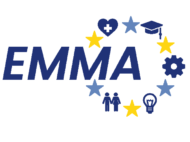The following statement is taken from the EMMA project website: “The EMMA programme will be delivered online, allowing future students to study from anywhere”. It is a great undertaking and one with challenges both pedagogically and technically. In Output 5 of the programme, we have so far explored both of these challenges, but in this blog posting the main focus will be on the technical side of providing an online learning platform for the students of the six EMMA universities. E-learning itself and well-thought learning environments are obviously nothing new in this day and age, but choosing one or a combination of delivery systems, Learning Management Systems, or LMSs, do possess some challenges one needs to be aware of.
Between the six partners in EMMA, there are six more or less different LMSs in use, where learning is happening as we speak. How the learning is happening is, of course, a product of pedagogical thinking in the design of the platforms and the study modules themselves. For the teacher/student such a platform in time becomes familiar and its functions are clearly understood. It is well-established that a smooth, user-friendly LMS environment supports learning.
When learning is spread among several platforms, great care must be taken in designing and combining online courses so that the courses are recognizable as a learning path, still relatively easy to use, and most of all, seamlessly integrate into a curriculum. In the EMMA project it seemed that a centralized solution, a single learning platform in use, was not going to be a viable option, so the Output 5 team was tasked to find another solution. Thus, the idea of using of the international standard Learning Tools Interoperability (LTI) was born as a way to connect our respective LMSs for a combined solution.
Publishing, effectively activating, the LTI tools on a Learning Management System provides an opportunity to connect it to other LMSs, where the LTI-created links work as pathways between the platforms. Resources in a learning environment, for example Moodle, are more or less a set of links to texts, videos, activities etc. In the case of LTI-formed link, instead of the link leading to another page on the learning module, the user is sent to a different LMS hosted by an EMMA partner university. Minimal personal information, such as user’s name, e-mail and role in the course are transferred from the subscriber university’s LMS to the publishing host LMS, but importantly the grades are also transferred back to subscriber LMS course from the publisher.
So, in theory with the LTI solution, a student from any EMMA partner can browse through a list of courses located on their own EMMA LMS course hub and simply by clicking on a title, the student is then led to the LMS where the selected course is hosted and their learning path in that subject material can begin. As user profiles and grades are passed back to one’s own platform via LTI connection, the administrative burden is significantly lessened.
Sound good? It does, but…it is still a complex world we live in, even when solutions such as LTI provide glimpses of hope. Here comes bit of backfire: not all LMSs, or their administrators, OR their parent hosts (universities) might allow LTI to be a straightforward back-and-forth conduit.
What this means is that for some partners it rules out the possibility of creating and hosting learning modules in an environment that is most familiar to them. So far in EMMA this small problem has come up, so more investigation and solution finding are still ahead and testing will continue.
Antti Kauppila (MEd, Karelia University of Applied Sciences)


